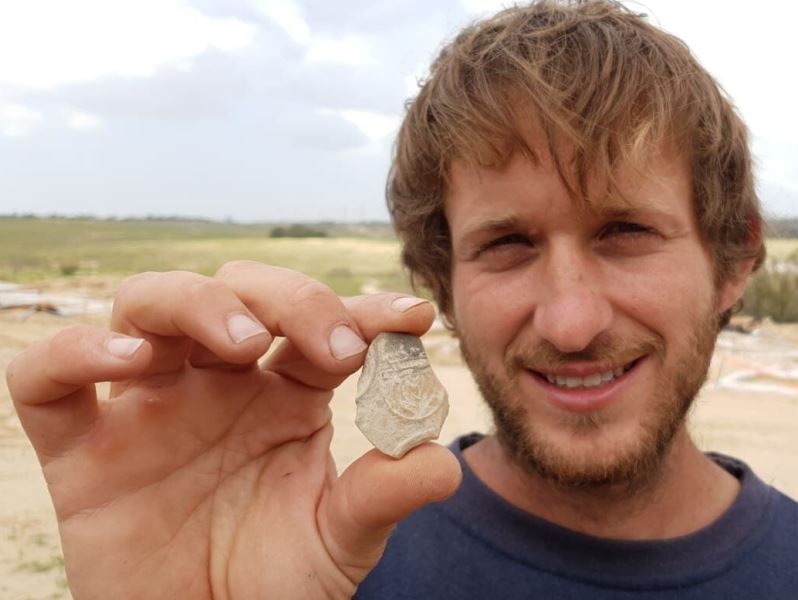Archaeological excavations conducted by Ben-Gurion University of the Negev along with the Israel Antiquities Authority and underwritten by the Ministry of Housing to facilitate the construction of a new neighborhood, have revealed among other things, the sherd of a rare oil lamp depicting a menorah with nine branches. This is one of the earliest artistic depictions of a Jewish menorah ever discovered. The public is invited to visit the archaeological excavation tomorrow (Monday).

Above: Oil lamp sherd decorated with a nine-branched menorah (Anat Rasiuk, Israel Antiquities Authority)
For the first time, the remains of a Jewish settlement of the Second Temple period have been discovered in Beer-Sheva. The archaeological excavation carried out to facilitate a new neighborhood near the northern entrance to Beer-Sheva has revealed evidence of Jewish day-to-day life there, including part of an oil lamp decorated with a nine-branched menorah – one of the earliest yet discovered by researchers – as well as limestone vessels used by Jews for reasons of ritual purity, a watchtower and more. The site, dated from the 1st century CE until the Bar-Kokhba Revolt in 135 CE, also appears to contain underground hidden passageways used by the Jewish rebels.

Above: IAA Archaeologist Avinoam Lehavi holding the ancient Oil lamp sherd decorated with a menorah (Anat Rasiuk, Israel Antiquities Authority)
According to the excavators, Dr. Peter Fabian (pictured below) of BGU and Dr. Daniel Varga of the Israel Antiquities Authority: "Remains of the settlement cover an area of around 2 dunams and include several structures and installations, such as the foundations of a large watchtower, baking facilities, ancient trash pits and an underground system that was probably used as a Jewish ritual bath (mikveh). Signs of a conflagration discovered in some of the structures evince a crisis that the settlement experienced, probably that of the First Jewish Revolt in c. 70 CE."

The site is located along the southern border of the ancient kingdom of Judah next to a road that led from Tel Beer-Sheva to the southern coastal plain. The site's strategic value along the road was probably the reason for the construction of a 10 x 10 m. watchtower, the foundations of which were uncovered in the excavation. The remains of a staircase would have led upwards to the two upper levels that are no longer extant. During the Late Roman period, the stones of the tower were used to construct other nearby buildings.
The special finds uncovered in the excavation included a sherd of an oil lamp of a type known as a Jewish “Southern lamp". There was great excitement when the sherd was cleaned and its decoration revealed: a nine-branched menorah. According to Dr. Fabian and Dr. Varga, “This is probably one of the earliest artistic depictions of a nine-branched menorah yet discovered." It is interesting to note that of the few lamps found depicting a menorah, these are never seven-branched. This was in accordance with a ruling in the Babylonian Talmud stating that only the menorah in the Temple could have seven branches and thus lamps used in domestic contexts commonly had eight to eleven branches.

Above: Archaeologist Shira
Bloch holding a 2000-year old vessel discovered in the excavation. (Credit: Israel
Antiquities Authority)
Dozens of bronze coins discovered at the site belong to the period of Roman provincial rule. Some were minted in Ashqelon and others were minted in cities from throughout the Roman Empire.

Above: Typical Jewish vessels uncovered in the excavation (Credit: Anat Rasiuk, Israel Antiquities Authority)
The public is invited to visit the archaeological excavation tomorrow - Monday, April 8, between 15:00-17:00 at no charge. Details can be found on the Israel Antiquities Authority Facebook page – רשות העתיקות-לגעת בעבר.
Media Coverage:
Fox News
JPost
Times of Israel
Jewish Press
